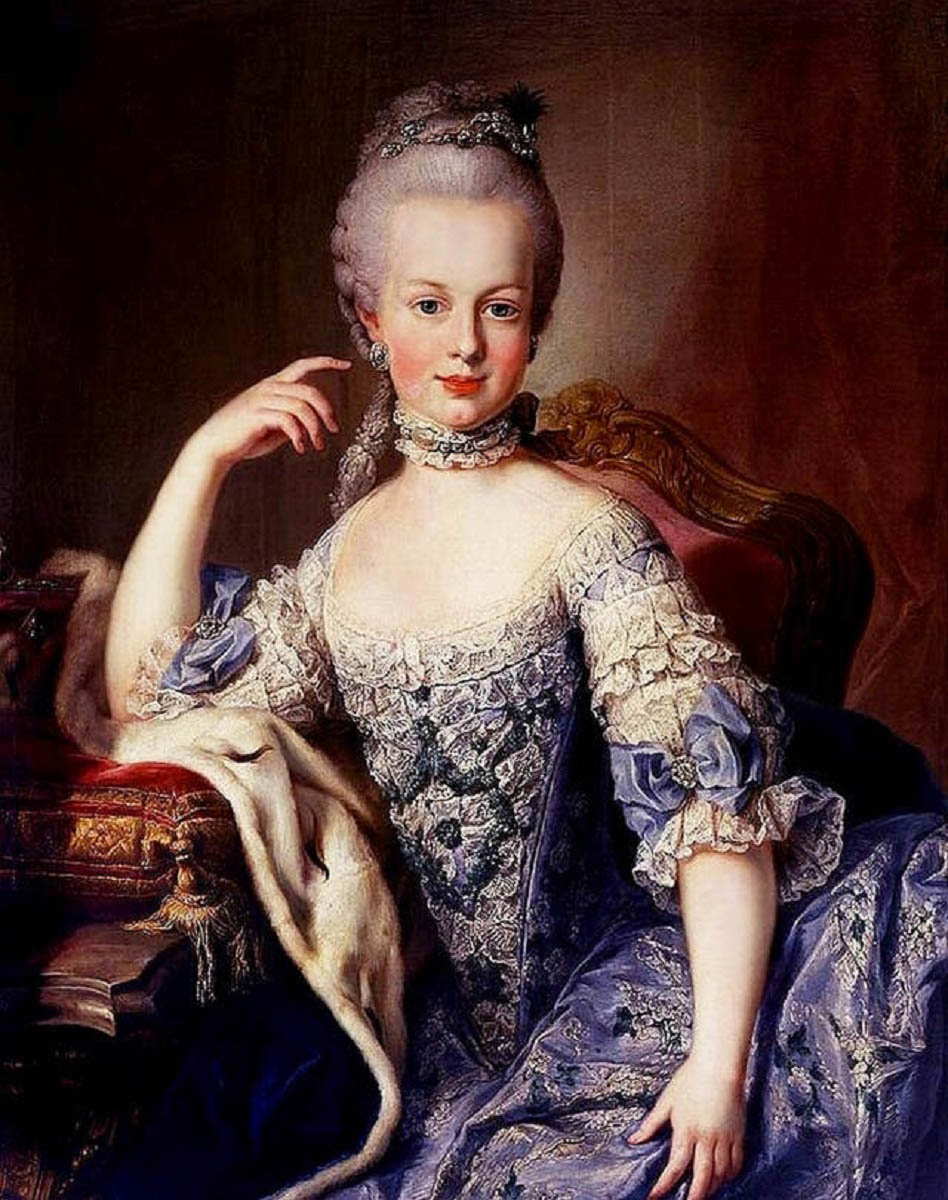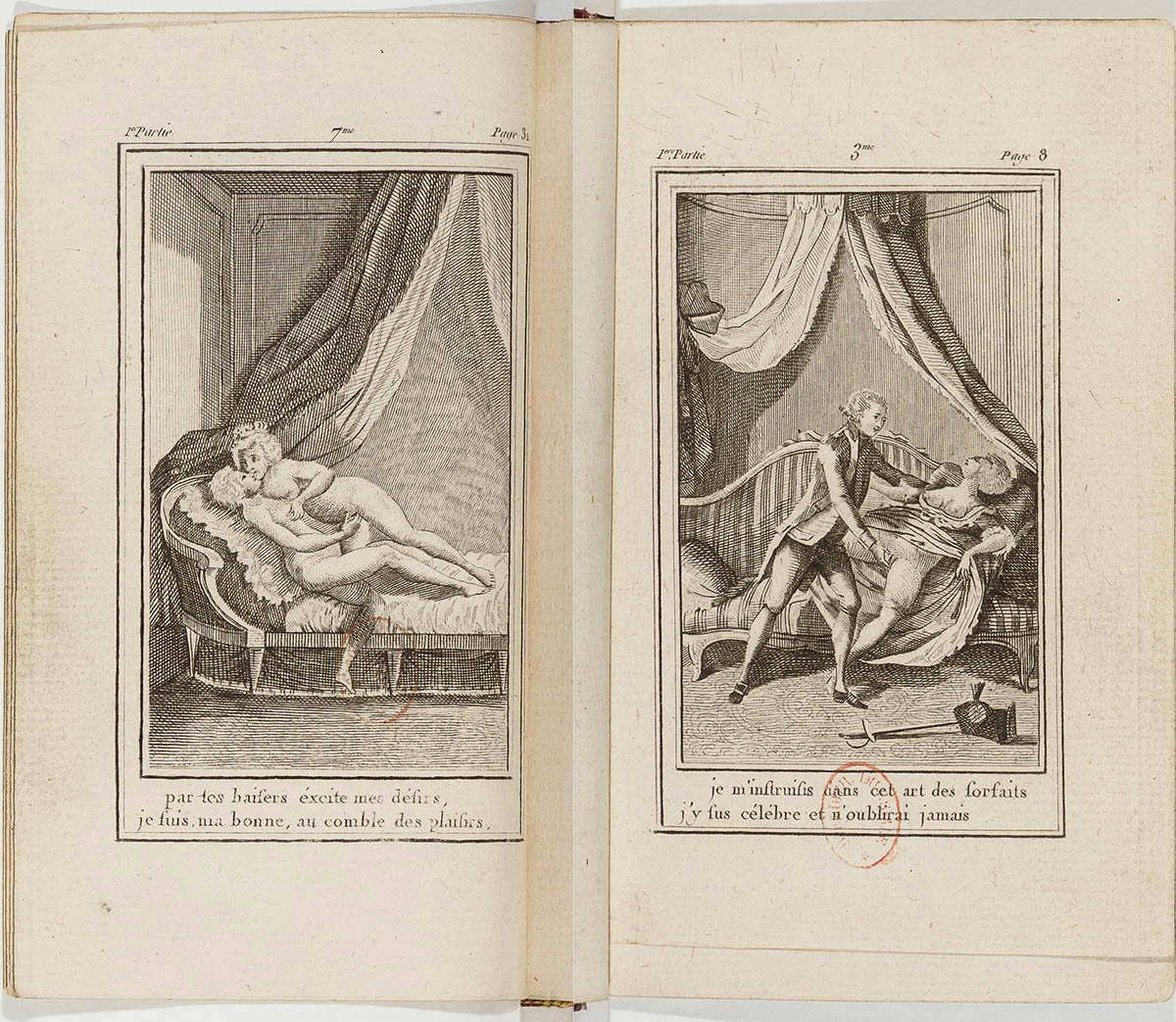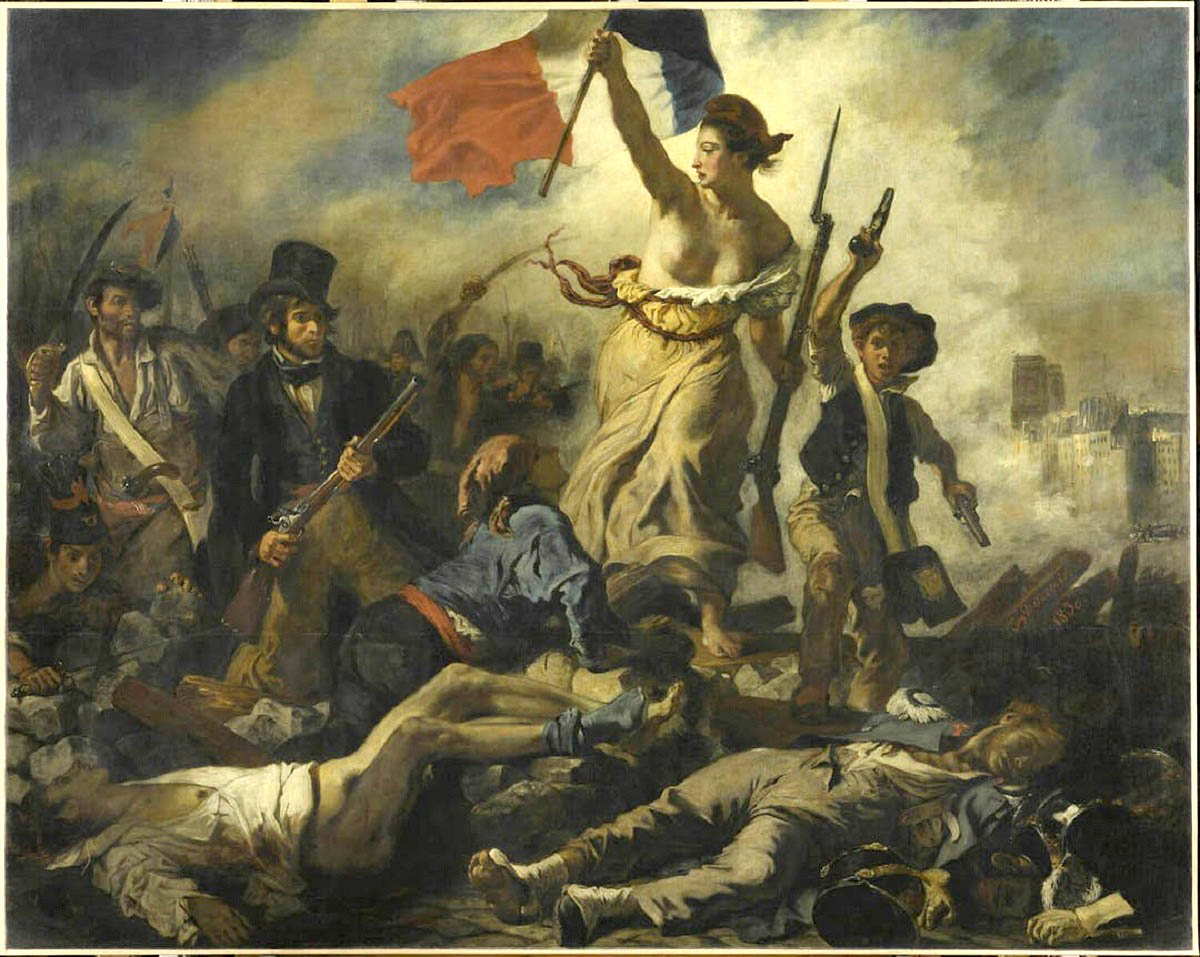
When Marie Antoinette married Louis XVI, the Dauphin of France, she discovered that her light-hearted character and the constant pursuit of pleasure weren’t well-received in a country where a large portion of its population was suffering from harsh winters, bad harvests, and backbreaking taxes. When the young archduchess first arrived in Paris, people were already hardened by hunger. As the crowned queen, Marie Antoinette remained willfully blind to life outside of Versailles and eagerly spent money on jewelry, dresses, gambling, and partying. In her persona, the French people had found an outlet for their frustration and she became a symbol for everything that was wrong with the monarchy that led to the French Revolution.
From Marie Antoinette’s Privileged Childhood to Illustrious Versailles

Marie Antoinette, born Maria Antonia Josepha Johanna, grew up at the Habsburg court in Vienna as the 15th child of Empress Maria Theresa. As the youngest girl among a large number of children, Marie Antoinette enjoyed a life of privilege and wealth. A sweet and endearing child, Antoinette enjoyed music, dancing, and riding, but was never all that interested in pursuing academic topics. The iron-willed Maria Theresa, always more of a state leader than a mother, saw little Antoinette as a light-hearted and affectionate girl, but not necessarily a remarkable one.

As Marie Antoinette entered her teenage years, she certainly didn’t become less frivolous, but her unparalleled charm and grace made her stand out. These qualities would serve her well in the diplomatic game aristocratic girls were expected to play when securing a tight-knit web of alliances within Europe. In a bid to pacify France, then an enemy of Austria, 14-year-old Antoinette was sent to marry France’s heir to the throne, the future Louis XVI. Maria Theresa wished her daughter good luck, pleading with her to be good to the French people as if an angel was sent to them. Sadly, Antoinette was never able to fulfill her mother’s wishes.

Get the latest articles delivered to your inbox
Sign up to our Free Weekly Newsletter
The new dauphine married Louis on May 16th, 1770, and they would be crowned as the new King and Queen of France and Navarra a mere four years later. The dauphin was indecisive, quiet and shy, and initially showed little interest in his beautiful new bride. While it was essential for the couple to produce a legitimate heir, the act of sexual intercourse seemed to make the king uncomfortable. It took seven years for the couple to finally consummate their marriage, but once they had, Antoinette would give birth to four children, of which only one, Marie Thérèse, would reach adulthood.

Antoinette was very different from her reserved husband. Louis loved to read and busy himself with metalworks, while Marie Antoinette was outgoing and indulged in gambling and partying, and reveled in extravagant clothing, hairdos, and jewels. Louis never denied his wife anything, and somewhat enabled her pleasures much as she did his. It wouldn’t take long for the king’s indecisiveness and the queen’s extravagance to lead to trouble.
Lavish Escapism, Costly Politics, and a Starving Population

While Marie Antoinette was certainly raised to obey, the rules at Versailles occasionally proved to be too rigid for the fun-loving queen. Her father, who’d died when she was nine, occupied a mere ceremonial position at court and enjoyed spending time with his family in a carefree environment where all formalities were dropped.
But formalities were always present at the highly regimented French court and Marie Antoinette felt a desire to escape. The pinnacle of her escapism was satisfied when Louis gifted her Le Petit Trianon in 1774. She expanded on the original design by adding stocked ponds, streams, and a rural village with an idyllic display of milkmaids, cheesemakers, and shepherds. She swapped her elaborate royal gowns for a simple white muslin dress and straw hat and played the role of shepherdesses in the plays she’d perform at the Trianon.

As the queen broke from court etiquette and continued to expand her fantasy world, public opinion was rapidly turning against her. She was thought to be spending her money on trifles and seemed to selfishly abandon her responsibilities as a mother, wife, and queen. Her idealized show of “the simple life” was a response to the fashion of returning to nature, but there was growing discontent among the actual farmers in the French countryside who were losing their lands. A decade earlier, farmers had already risen in the so-called Flour War, a series of riots following a surge in bread prices. The Flour War had set the stage for the French Revolution to ignite as bitter winters and dwindling grain supplies would soon cause similar revolts to take place in Paris.

But Antoinette wasn’t the only one failing in her role as a ruler. Louis was losing control over the country’s finances. He’d sent funds and troops overseas to support the American Revolution and weaken England’s power, while his country was already profoundly in debt. But despite Louis’ economic blunders, Marie Antoinette received most of the backlash. A number of courtiers would agree that the money so extravagantly poured into Le Petit Trianon would be better spent improving the lives of the poor, and the queen was soon given the name of Madame Deficit.
Art and Lies: The Cartoons That Riled Europe

The queen was still largely unaware of the slow poison she was administering to the French monarchy until underground cartoons and illegal pamphlets started to spread from other European countries. The cartoons showed the queen in compromising positions with other men and even women. The king and his royal censures were powerless to stop it, and the pictures soon found a passionate audience more than ready to hear how their queen was immoral, licentious, and vile. After all, what was the queen doing all tucked away in the charming Petit Trianon? How could an outgoing young woman remain loyal to just one man who lacks vigor? And why could the king only visit when invited?
By 1785, the queen’s name was so thoroughly dragged through the mud, that the famous scandal of the affair of the diamond necklace delivered a crushing blow to her already bad reputation. The elaborate hoax was orchestrated behind Antoinette’s back, but the cartoons had achieved their goal, and no one believed her innocence in the matter. She had become the scapegoat, the reason behind everything that was going wrong in the country, and a victim of people’s rage.

The queen retaliated in 1787 and asked Élisabeth Louise Vigée Le Brun to paint a family portrait subtly referencing the triangular renaissance iconography of the Holy Family. Le Brun, a gifted portraitist blessed with the queen’s patronage, had painted no less than 30 portraits of Antoinette and her family. This time, Le Brun and the queen chose to forgo jewelry and elaborate frocks and showed Antoinette wearing a pair of earrings, a simple dress, and a visibly bare neck. The real riches, the portrait seems to suggest, are the queen’s children. But however skilled this piece of propaganda is, it did little to nothing to stop the rise of the masses or to restore Antoinette’s tarnished reputation.

Marie Antoinette was now painfully aware of the danger she was in and put the parties on hold in an attempt to become more politically involved. While Louis seemed to succumb to the pressure, Antoinette attended a meeting of the council to try and pacify the people and find a solution to the economic crisis. But some would say this was too little too late. Antoinette had never before shown any interest in politics or the suffering of the French people, and she was unable to take affirmative action. What’s more, her efforts seem to have had an adverse effect, and, at this stage, it seemed that no matter what the queen did, it was met with hostility.
Liberty and Cruelty: A Dethroned Queen Faces the French Revolution

The sentiments that stoked the flames of the French Revolution had already been brewing for decades, but 1789 marked a transformative and ominous year for the French Monarchy. Louis summoned the Estate General, where the French estates of the realm were represented in the Clergy, the Nobility, and the Commoners, to address France’s critical financial situation. But he could not have foreseen that the Estate General came to a close as the Commoners, or the Third Estate formed a National Assembly demanding a constitutional monarchy. While Louis pondered the notion and was his usual indecisive self, Antoinette positioned herself fervently against the constitution.

Under the queen’s influence, Louis ordered military troops to position between Versailles and Paris. But rather than provide protection, it provoked the Commoners and inadvertently contributed to the French Revolution finding its momentum. On July 14th, 1789, only two months after the opening of the Estate, the Bastille, a political prison and symbol of royal authority, was seized by the revolutionaries. In the weeks that followed, the feudal system was abolished, the press was declared free, and the Declaration of the Rights of Man and of the Citizen was enacted.

But the chaos didn’t just end there. Even with a critical change to the social hierarchy established, grain supplies were running dangerously low, and the price of bread skyrocketed once more. Meanwhile, the royal family seemed to be sitting in their royal residence, which had become nothing more than a symbol of an unwanted and gradually outdated system. On October 5th, an angry mob of women gathered in Paris and marched on Versailles. Men gradually joined as the mob waded its way through the city. The royal apartments were stormed violently as cries for the queen’s head echoed through the rooms. The mob demanded that the royal family leave Versailles. Louis, unable to resist the large number of men and women before him, moved his family to Paris.

They were housed in Tuileries Palace, an act that marked the beginning of the gradual yet decisive dissolution of the monarchy’s supremacy. In the first period of her imprisonment, Antoinette decided once more to focus on understanding the rapidly changing political landscape. She asked questions about what people thought of her and wanted to know all about the revolution. She communicated in code with foreign allies and actively sought a way for her family to get out of their predicament.

But after nearly two years in captivity, only one real option seemed to be open to them, an option to escape. On the night of June 10th, 1791, the royal family sneaked into a hackney cab and made their way to Varennes. Only miles from their destination, they were discovered and brought back to the Tuileries Palace through jeering crowds. The episode of the flight to Varennes soon escalated and the free press allowed for Marie Antoinette’s ruinous campaigns to be revived in Paris.
She was portrayed not only as a promiscuous fiend but as an animal, a serpent, a demonic form of a woman who was not permitted, under any circumstances, to regain power. Now, she was also the Austrian, a foreign power looking to undermine her French subjects and stifle their emancipation. Louis, on the other hand, was often depicted as a pig. Pitiful, castrated, and glutinous, he was seen as weak, while his wife was perceived as the enemy of the people.

The attempted escape only aggravated the revolutionaries, and on September 19th, 1791, a new Constitution was enacted. France was now a Constitutional Monarchy. To solidify this new government, revolutionaries grew hungry for a war that would take the ideals of their revolution across borders. The primary target for this war was Marie Antoinette’s native country, and in early 1792, Louis declared war on Austria. The queen welcomed war as much as the revolutionaries. She hoped that it would bring her allies to France and secure the survival of her family, which she tried to accelerate by sending her relatives reports of French tactics and movements. But no help would come for Antoinette and her family. The war would rage on well past her death and last over two decades.

The monarchy had now been damaged irreparably. In June of 1792, revolutionary radicals forced their way into the palace. They planted a Phrygian Cap on the king’s head and forced him to toast to the revolution. Through this one act, the king’s remaining authority vanished and the family was forced to move again. They took up residence in a medieval castle known as The Temple. On September 21st, 1792, the 1000-year monarchy was abolished, and Antoinette and Louis were now mere citizens living in the new French Republic.

That same month, a guillotine had been erected in Paris and would be inaugurated that very month. This so-called humane form of execution would become the morbid symbol forever associated with a reformation that had initially started out as a creed for freedom, fraternity, and equality. Mobs took the streets once more in the backdrop of an increasingly demanding war and the threat of civil war caused by the civilians who opposed the revolution. A great massacre of royalists took place, which included the former queen’s favorite, the Princesse de Lamballe, whose head was put on a spike and held in front of Antoinette’s window.

In the great massacre of royalists, the former-royal family would not be spared. A few months later, Louis was put on trial and sentenced to death by guillotine. To make matters worse, Antoinette’s eight-year-old son, the then Louis XVII for any existing royalists, was taken from her and moved to another cell in the tower where the poor boy was beaten and forced to sing songs of the revolution. He would never see his mother again and would die of illness two years later.

Now thoroughly humiliated with almost everything taken from her, Antoinette was separated from her daughter Marie Thérèse and moved to the Conciergerie, a fortress by the Seine. She was confined to a dank cell in the medieval stronghold, deprived of almost all natural daylight with only one small window breaking up the thick walls. By this time, France had become more isolated in Europe, and civil war was once again rife. In a bid to protect the young republic, a Revolutionary Tribunal was formed to prosecute the enemies of the state. And on October 14th, 1793, Marie Antoinette appeared before them.

No more than a show trial, the proceedings acted as a final attempt to fatally wound a once-proud monarchy. The stories shared about the last queen of France were primarily drawn from slanderous cartoons and pamphlets instead of any real evidence. Outrageous allegations were thrown into the mix and the tribunal went as far as to accuse Antoinette of having an incestuous relationship with her son. Her fate was already decided prior to the trial and she was to be executed by guillotine two days later, on October the 16th.

While many representations of Antoinette’s final moments exist, the most intriguing one is a quick sketch created by neoclassical artist Jacques-Louis David. A fervent revolutionary who had voted for Antionette’s death, David sketched a woman who looked much older than her 37 years. Her hair, once an inspiration for outlandish art and design, peaks out from under her bonnet in unevenly cut pieces. She wears a grim expression, but holds her head up high, her back straight, and won’t break her composure even when approaching the guillotine. The artist didn’t turn his adversary’s final moments into yet another caricature. Instead, he took a few steps back from the cause he had been fighting so hard for, in order to observe a woman who had lost everything boldly facing her death.
Marie Antoinette: The Last Queen of France

The French Revolution introduced powerful ideals we still strive to live up to today. And while the revolution sought to bring an end to years of inequality, we often forget about the cruelty that transpired as the new republic matured. Years of resentment and hunger had made the French people vengeful. And in Marie Antoinette, they had found the perfect scapegoat to represent everything that was wrong with an unjust system.
More than just putting an end to this system, they wanted to exploit her destroyed reputation for everything it was worth. Yes, she was frivolous and did little to nothing to improve the lives of the people and certainly, the monarchy was no longer providing the country with what it truly needed. But along with liberty, the French revolution also created more tragedy of its own in its brutal massacres, and it slowly but surely tore a mother and her family apart.







